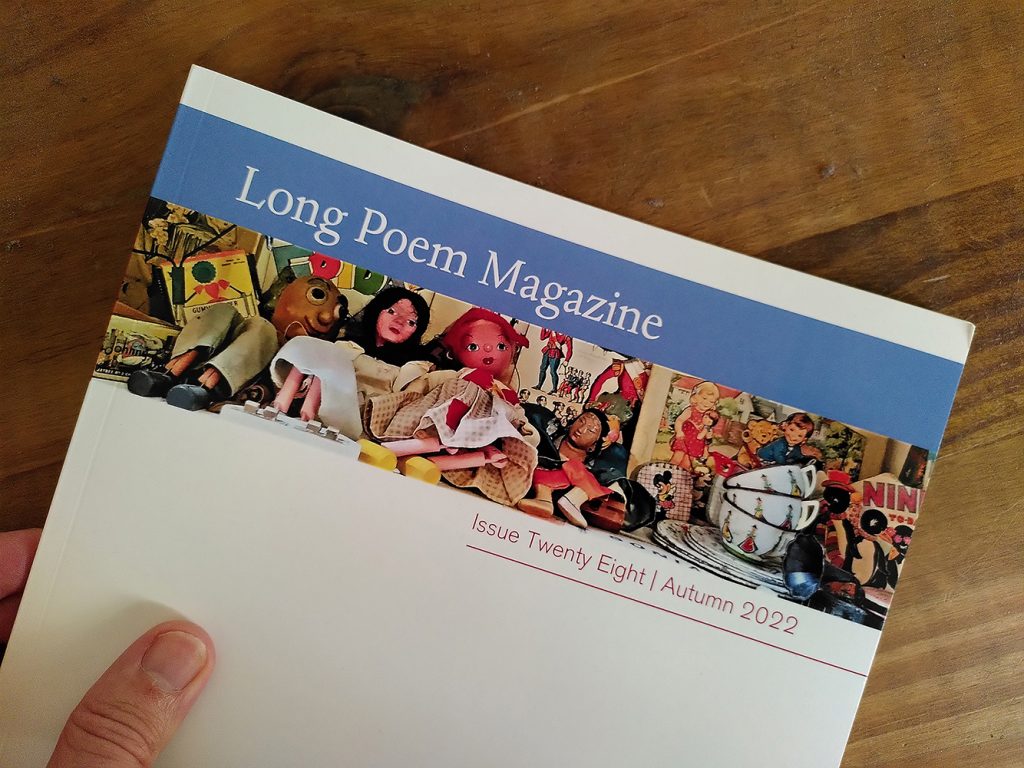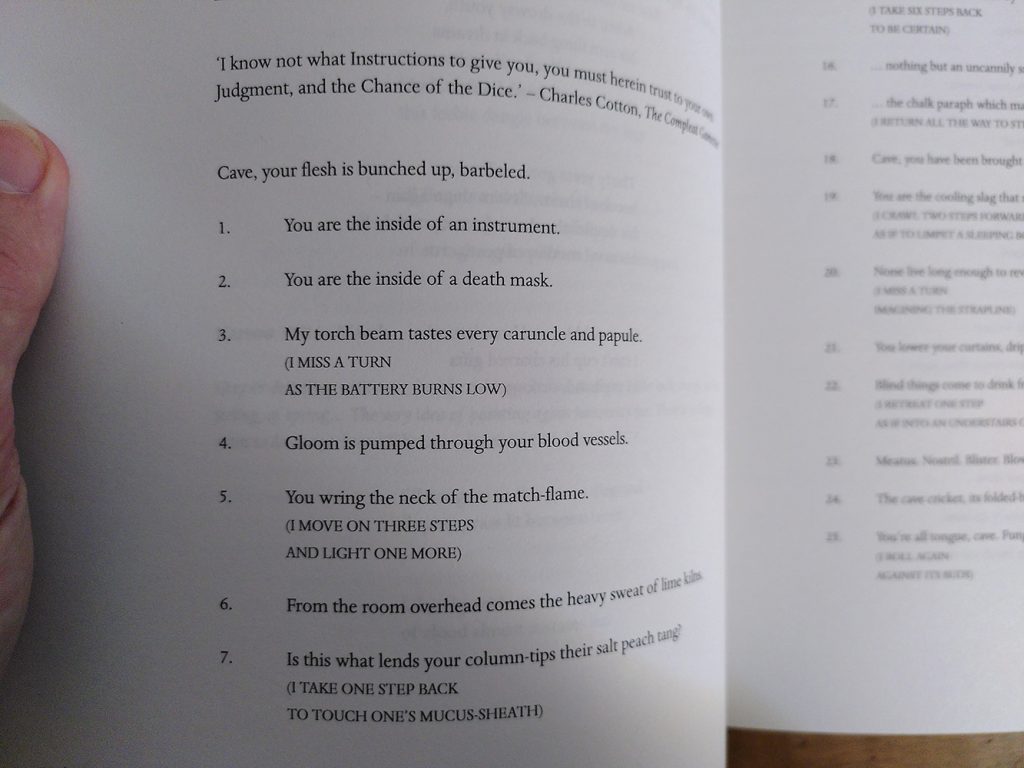
I’m finding most, if not all, of the poems published alongside mine in the latest issue of Long Poem magazine instantly appeal to me, before I’ve even started reading them, and I think it’s because of the length stipulation. As its name suggest, Long Poem is for poems of 50 lines or more, and this requirement all but demands that a poem have a well-developed structure, a sense of being made brick by brick, in a way that’s much harder to detect in an array of short pieces.
It helps that each piece is preceded by an introductory paragraph which sets the thematic context for what follows in much the same way as a book blurb. Here’s the intro to my own contribution:
This is the final version of a poem I’ve been trying to write for more than ten years, ever since I learned that the writer Charles Cotton was said to have gone into hiding from his debtors in one of the many natural caverns of the Peak District. It’s also the first of a set of ‘labyrinth’ poems – pieces where the form is adapted from some kind of puzzle or toy, in this case a roll-and-move race game like the Game of the Goose or Snakes and Ladders. That form seemed very well suited to describing the experience of becoming absorbed in a system or subject, or even an intense personal or bodily encounter; there is a pronounced tension between the idea of a numerically ordered sequence of events and the stumbling, back-and-forth movement dictated by dice rolls and penalty squares. But it took a very long time for this compositional strategy to occur to me – at one point, the poem was shaped like a set of stalactites and stalagmites, and had to be read with the page turned 90 degrees. At another, it was written in a row of block stanzas, in such a way that the last word of every line of every stanza was also the first word of the equivalent line in the stanza to the right of it. Apart from anything else, the poem’s current form is much more readable.
And here are the first few lines:

I say it’s the first of a set of labyrinth poems because this one is titled ‘A Labyrinth’ and intended to stand at the beginning of the sequence. The other two that were published earlier this year in Raceme no. 13 are both called ‘Another Labyrinth’. There are two more still to come. One is particularly difficult to find a home for, but we’ll see what happens.